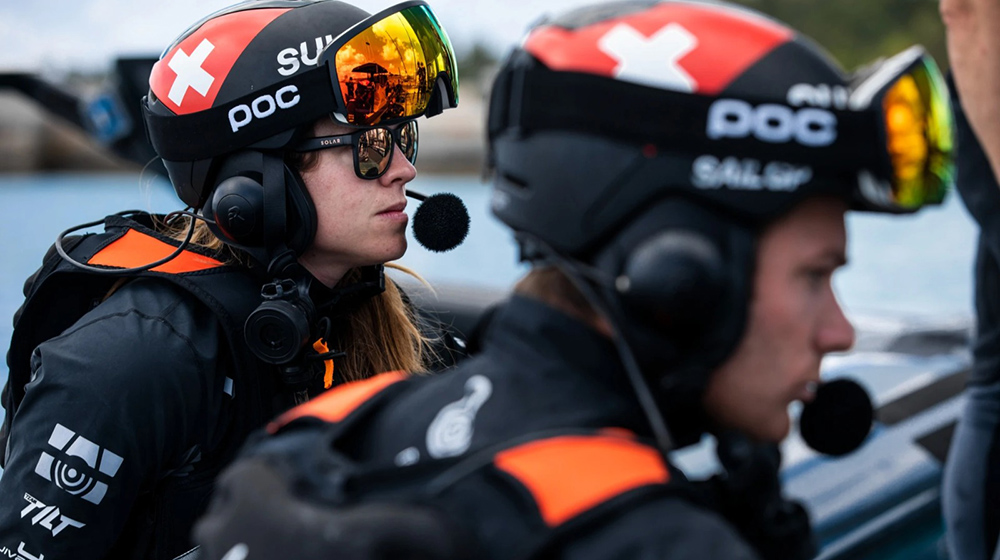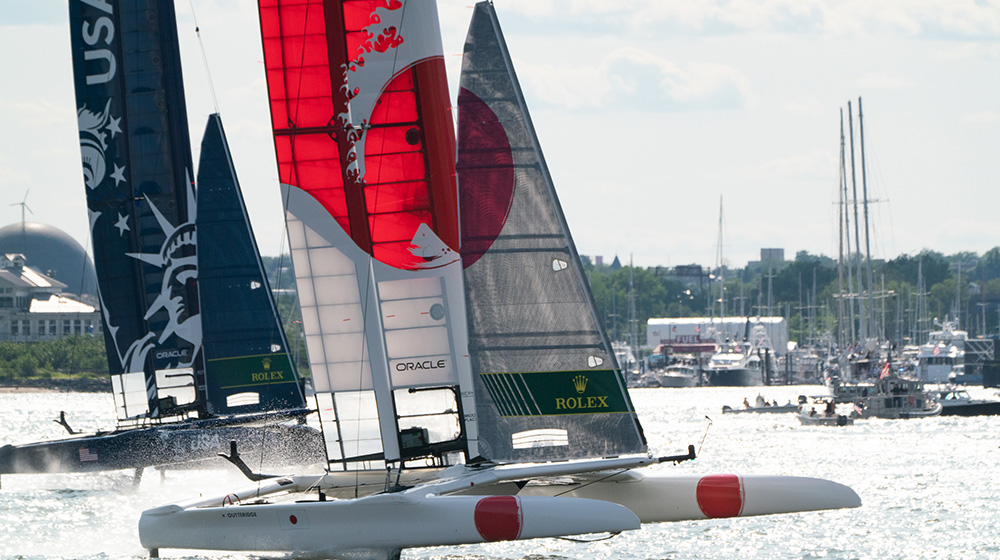
Nautical Knots: Updated Guide 2023
NEWS | Marine Life, Sailing
If you are passionate about sailing or sailing in general, it will be great for you to know the nautical knots. It is very important for the safety of navigation and is one of the most repeated actions when we are on board any boat.
Table of contents:
- Reef Knot
- Ballestrinque - Clove hitch Knot
- Figure-Eight Knot
- Bowline knot
- Round turn or round turn
- Granny knot
- Cleat knot
- Sheet bend knot
- Sliding figure-eight knot
- Surgeon´s knot
- Daisy Knot
- Carrick bend knot
- Fisherman's gauze knot
Main characteristics when tying a sailor's knot
A good sailor's knot will favor you in all senses and for that reason it must fulfill a series of characteristics.
- It must be able to be made and unmade as quickly as possible.
- It must be as strong as possible to be able to withstand all kinds of pressures.
- The knot must be appropriate for each situation.
Types of marine or nautical knots
Within the nautical knots, we will classify them into two large groups: basic and advanced. It is equally important on a short voyage of a few miles or, on the contrary, for a long voyage.
It is essential to master many of these knots and their usefulness as they are essential for the safety and stability of our vessel, from those used for mooring or for securing a line to any surface that requires it.
Basic marine knots: names and step by step.
Reef Knot
Used to tie two ropes of the same diameter and conditions or material. It is also used to join the two ends of the same rope. It should look like a figure eight and is like two successive half knots. It is very easy to undo and is not very secure, but it is quite useful on different occasions, especially in sailing, which is used a lot.
- To make this knot we take two ends, one on the left (main) and one on the right.
- Pass one of the ends, the left one specifically, over the right one and make a turn. This is how the first knot is made.
- Now take the right end and bring it to the right.
- To finish, pass the left end through the loop (hole) formed and that's it.
Ballestrinque - Clove hitch Knot
This is one of the most commonly used and simplest marine knots. It is the one used to fix the ship's fenders by attaching the lines to several masts, perpendicularly. Like the reef knot, as it is easy to tie, it will also be easy to untie, so it is not the safest, but it can be reinforced with an extra safety knot.
- Slide the string around the mast on which you are going to work and cross it over the firm.
- Give the guyte a second turn by inserting it through the first turn you had obtained.
- Pull on both ends to secure the knot.
Figure-Eight Knot
It is a very versatile nautical knot. It is not only used in sailing, but it is also very useful in other sports such as climbing. Despite being a simple knot to tie, it is one of the safest. As its name suggests, it has the shape of an eight and is generally used to prevent any line from unraveling, also preventing any line from escaping through the pulleys. It is one of the most commonly used in sailing and one of the first to be taught due to its great usefulness.
Bowline knot
Like the figure-eight knot, we could say that the guide knot is another essential among the sailor's knots and that it is usually taught as one of the first ones. It is one of the most advantageous and firm, since it forms a kind of ring that does not allow anything to slip out of what is tied with this knot. The purpose of the guide knot is to establish a fixed loop, a loop is the loop that is formed on a rope (usually end) around any object to which the rope is tied.
- Take a firm and make a coke (it is a twisting turn that takes a rope).
- Pass the choyte through the coke from the bottom to the top.
- Make a twist to the leader and pass the rope through the coke again.
- Take the firm and at the same time pull the rope.
Round turn or round turn
This is another of those basic and primordial seafaring knots. It is used to tie the grapnel (hence its name) or to connect a line to any post. The grapnel is a reduced anchor used in small boats, so this knot is also used in fishing to tie hooks.
Granny knot
It is a general, simple, and connecting knot. It is one of the lowest quality knots and is used to consolidate a rope to any object. It is very similar to the reef knot, but as we said, it is of much lower quality and security.
Cleat knot
It allows us to securely attach a line to a cleat. We call cleat to the consistent piece that we find on deck in the shape of T, is anchored to the boat and the main function of this is to tie the ropes. It is a kind of sailor's knot that is accessible and very quick to tie, just as it can be easily undone. It is the most commonly used for tying the ship in port.
Advanced seafaring knots
Sheet bend knot
More complicated, it joins two different strings. It is important that it is very firm and under tension, otherwise it would come loose too easily. This is a knot used to tie ropes of similar thickness and structure.
Sliding figure-eight knot
This is one of the most practical types of sailor's knots when it comes to adjusting the tension of the rope. In that sense it is very reliable, and is very suitable for shackles or carabiners. However, it is defective for large loads.
- We make a sine (when the knot begins and ends with the two ends together) at the end of the rope and we make a turn around the stanchion (rest of the rope with respect to one of its whips), passing over the loop.
- We make a second turn around the loop and pass the end of the rope (end of the rope) between the turn we have made, returning parallel to the firm.
Surgeon´s knot
It could be a variation of the reef knot. It is used to join elastic ropes. It is very useful and is used a lot in fishing or even in surgery, hence its name. As we commented that it could be a variation of the reef, to make it is very similar, but it is reinforced with a second turn on one of the sides.
- We make half a simple knot and give it one more turn.
- We take the two ends, we make another half knot more taking into account that the whips come out parallel to the firm as in the curl nest.
- Tighten the knot well.
Daisy Knot
It is used to reduce the length of a rope and has the characteristic of not damaging it. In addition, it can be easily undone, even if it has been subjected to great pressure.
- Three knots are tied, from left to right, always passing the next knot over the previous knot.
- Pass the central knot through the inside of each of the lateral knots.
- Tighten the knot in its final position.
Carrick bend knot
Also known as calabrote, it is a nautical knot suitable for heavy ropes that are too stiff to form common knots. It is very safe and withstands extreme loads, even when wet it is very difficult to undo and continues to fulfill its function to the maximum.
- We take one of the ropes and make a ring by passing one end of the rope over the other.
- We pass the second rope that we are going to join over the firm of the other rope, and below the other end.
- We cross the second rope with its own firm, inside the first loop.
- Tighten the knot and tighten.
Fisherman's gauze knot
It is a knot widely used in fishing, hence its name. It is formed with a fixed loop and fishing lines. It is tied at the end of a line and is quite rough but secure. It can be difficult to undo, but can be adjusted at any height of the rope, not necessarily at the ends.
We already know the most common types of knots, from the simplest to the most complicated. Our article will help you to know how and where to do it.












_v2.svg)
_v2.svg)









_v2.svg)

